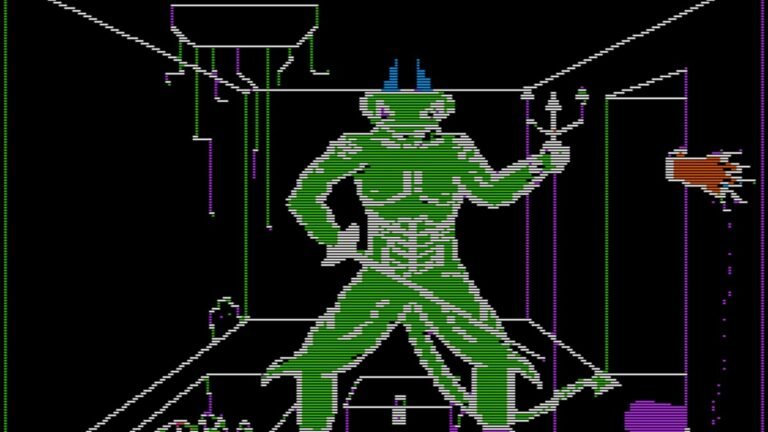EpicRPGTales selects the Apple II role-playing game Akalabeth World of Doom as the latest entry in its RPG Hall of Fame and looks into how it set up for one of gaming’s most notable RPG series.
The progress of video games in the 1970s and 1980s doesn’t seem that significant on a visual level these days, but the strides forward in gameplay are still quite prominent.
By the mid-80s, we’d already seen the birth of the JRPG formula, but right at the start of the decade, we were witnessing the genre as a whole take shape. And like much of early video game history, it all started quite innocuously.
In 1979, a teenage Richard Garriot was a long way from being the father of the Ultima series and an astronaut (who was already the son of an astronaut). But he was creating a game as a hobby. Garriot used a love of J.R.R. Tolkien and the pen-and-paper role-playing games he was playing with friends as the framework for his school project on an Apple II computer.
What began as a simple project grew as opportunity and influence opened up for Garriot. The most significant shift in the build initially titled ‘DND’ was the decision to not only include a top-down perspective to a wireframe 3D first-person one for the underground dungeoneering, which was inspired by a fellow Apple II game, Escape. This addition transformed what was already one of the earliest RPGs into the first to adopt a perspective that would later be utilized in some of the defining games in RPG history, including the series that ultimately emerged from this game.
And this game eventually got a name. Akalabeth: World of Doom, to be exact, and by that point, Garriot was creating makeshift copies to be sold in the ComputerLand store of his boss, John Prosper Mayer. This humble beginning led to the game being discovered by the California Pacific Computer Company, which worked out a deal to publish it for Garriott in 1980. The young developer would later state that the game ultimately sold 30,000 copies, earning him around $150,000. Amusingly, Garriot later said it represented the best return on an investment he had ever had, with everything else “all being downhill from there.”
The game itself is pretty bare bones, and was surpassed quite quickly, but in that simplicity lay the building blocks for a genre.
Akalabeth: Know Your Role

The premise of Akalabeth is simple. There are ten monsters to kill, one by one. They become tougher and more demanding, and that’s about it. Outside of that shallow framework, the game did feature a shop to purchase food, weapons, and items to aid your journey, but the juice was in that Akalabeth was a trendsetter.
Beyond being the first first-person RPG, several defining traits in Akalabeth can still be seen in RPGs and beyond to this very day. The use of food as a survival item is barely given a thought now, but here it was. In just a few years, the idea of a top-down world view would be quite ordinary, but again, here it was in an RPG for the first time. Hell, even the use of Elizabethan English was a novelty.
Oh, and hotkeys! You’d be annoyed if there weren’t a hotkey system now, but in 1980, the use of hotkeys for commands was one of the earliest player experience streamlining exercises available.
All of this would technically make Akalabeth a progenitor to Garriot’s iconic Ultima series, which would follow in 1981 and end up spanning multiple decades, sequels, and spinoffs with now legendary studios such as BioWare and Looking Glass working on some of those entries in that time. We haven’t seen a mainline entry since 1999’s Ultima IX, however, and since then, the series has largely faded into history.
But Ultima, and especially Akalabeth, are such vital parts of RPG history that they deserve to have their collective flame kept alive. Without them, the RPGs we all know and love would be very different beasts.
Read about all the current EpicRPGTales RPG Hall of Fame Entrants here.
You can download Akalabeth World of Doom for free on GOG.com.

